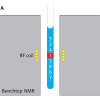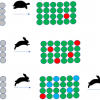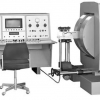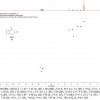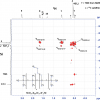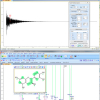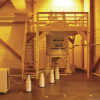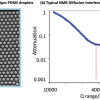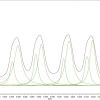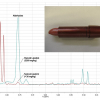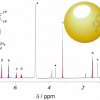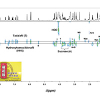Articles
This article describes a clever adaptation to benchtop NMR experiments that allows the collection of multiple scans (to produce high signal-to-noise ratios) without the time penalties involved.
Whilst automation is not a panacea, it can improve the accuracy of manual tasks as well as freeing up our time for more challenging tasks. The authors explore some particular examples they have come across and lessons learned from them.
Tony Davies and Roy Goodacre raise some issues around the reliance just on vast quantities of data collection in omics experiments. As they put it, should we “just keep throwing the mass spectra, nuclear magnetic resonance data sets and our ion mobility fingerprints onto a big pile for the statisticians to fight over?”.
An interesting insight into, well, a week in the life of the author as a fourth-year PhD student. Katie is working on investigating a way of detecting liver damage using spectroscopy, which is “about as interdisciplinary as you can get”! I’m sure all readers will find it interesting and it may be helpful for those you know who may be considering a PhD.
Clemens Anklin gives a short history of the commercial and technical development of NMR. From the first measurement of nuclear spin in 1937 by Rabi and his 1943 Nobel Prize to recent developments in small NMR spectrometers and instrument company changes.
Tony Davies and a number of others consider collecting supplementary spectroscopic data. Like Eurospec, the plan is to use such supplementary data not only to enhance the published paper, but also to aid thorough peer-review by allowing reviewers access to the full data rather than, as Tony puts it, “low-resolution images of data”. I’m sure you will be interested in a look at the future through this column.
Developments in hardware, higher field instruments, better multinuclear probes including cryoprobe options, spectrometer control systems and also desktop NMR data processing software have all combined to make the measurement of inorganic nuclei a potentially commonplace and very helpful, often complementary, technique to other spectroscopic analytical tools.
International standards need to keep pace with the innovation in analytical equipment and practices. For example, many of the advances in nuclear magnetic resonance (NMR) spectroscopy reported in this journal in recent years have yet to find themselves mirrored by updates in the respective Recommendations of the International Union of Pure and Applied Chemistry (IUPAC), nor in the many and varied proprietary recommended reporting formats of the different peer-reviewed primary scientific journals. Not that every innovation needs to be “standardised”: with the speed of many developments it is important to find the right balance between reacting to real movements in a field and enshrining a short-lived fad in a IUPAC Recommendation.
Tony Davies and Mohan Cashyap are concerned about your NMR data. When an article starts “On 10 October 2014 the impossible happened”, you will want to take note! Following the withdrawal of Agilent from the NMR business, Tony and Mohan consider three solutions to ensuring your NMR data is available now and into the future. If you have an NMR of any make, you will want to read this. Do remember that you can comment on the web version of the article.
“Rheo-nuclear magnetic resonance spectroscopy: a versatile toolbox to investigate rheological phenomena in complex fluids” is Claudia Schmidt’s topic. Rheology is an important science, and NMR has a number of uses within it. However, challenges remain for the simultaneous measurement of rheological and NMR parameters.
Tony (A.N.) Davies is getting excited by GHz NMR. These new high fields offer tantalising new areas of research but at a cost that generally requires their purchase by Government-funded centres of excellence. He argues that continued funding of such projects is essential, especially in difficult economic times.
Many analytical methods have been used to control the quality, authenticity and origin of fresh fruit. NMR methodologies yield a comprehensive metabolic profile, provide direct structural information regarding individual metabolites in the mixture and also give information regarding the water state in the tissue. This is useful in discriminating various fruits varieties, in investigating nutritional properties, in monitoring the development of the fruit and in assessing the optimum harvesting time.
Nuclear magnetic resonance (NMR) spectroscopy is one of the most powerful analytical tools used to probe details of molecular structure and dynamics. It requires very high magnetic fields and, hence, generally uses extremely large, powerful magnets. The advent of small, powerful magnets has allowed much less expensive low resolution NMR instrumentation to be designed, making it feasible to measure commercially important characteristics of dispersion behaviour and performance, including the wetted surface area of particulate suspensions and emulsion droplet size. An important additional practical application is the ability to determine competitive adsorption and/or displacement of polymers and surfactants at interfaces. This article presents a brief overview of these new approaches together with an example of each measurement.
1H NMR spectra are usually interpreted by hand, which is very time consuming, and can become a process bottleneck in fields such as high-throughput NMR. Greater automation of the spectral analysis process has become essential if NMR is to be of value as a high-throughput analytical method in the future.
Dirk Lachenmeier, Marina Gary, Yulia Monakhova, Thomas Kuballa and Gerd Mildau describe “Rapid NMR screening of total aldehydes to detect oxidative rancidity in vegetable oils and decorative cosmetics”. Lipid oxidation produces rancid products, which are both unpleasant and potentially toxic. The authors describe the use of NMR to screen food and cosmetic products. Whilst, vegetable oils were generally found to be in good condition, German women may wish to be careful of their lipstick, especially if they have had kept it for a while!
An NMR tour of Mediterranean anise-flavoured alcoholic beverages.
This article outlines the use of the DOSY NMR method applied to drug analysis and screening for counterfeit drugs or fake herbal medicines
A.N. Davies
External Professor, University of Glamorgan, UK, Director, ALIS Ltd, and ALIS GmbH – Analytical Laboratory Informatics Solutions
“The man who gets the most satisfactory results is not always the man with the most brilliant single mind, but rather the man who can best coordinate the brains and talents of his associates.”—W. Alton Jones
The purpose of this short review article is to highlight some capabilities of qNMR spectroscopic methods in drug quality evaluation, indicating that qNMR spectroscopy should be more often applied when chromatographic methods are not working effectively.
Our focus here is analytical procedures and the role of nuclear magnetic resonance (NMR) in particular. These have, until now, largely relied on conventional chromatography, and vibrational spectroscopy—infrared (IR), Raman and near infrared (NIR) spectroscopy. In spite of inherent difficulties with peak assignment and reliable quantification, vibrational spectroscopy has been used to derive information on reaction progression to impart fundamental understanding. This article sets out a wider scope to show how NMR can play a key role. Furthermore, NMR integrates well with established procedures to provide a suite of useful technologies that make the PAT challenge tractable.

